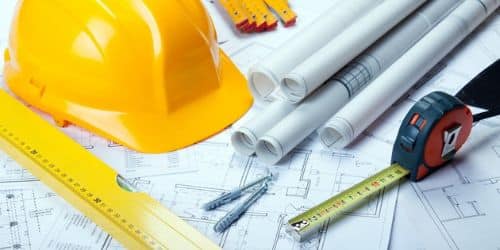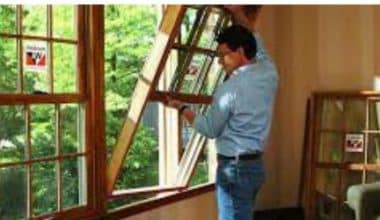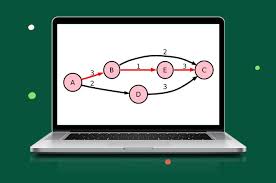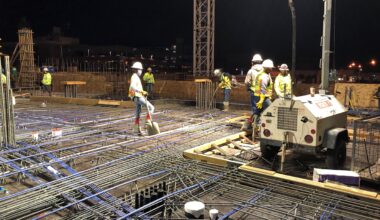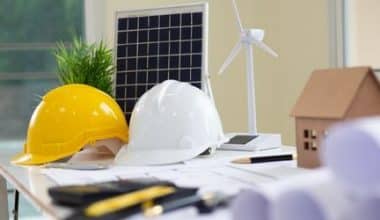Buyers frequently discover that specific residences fulfill most of their demands, while others meet a few and none. This forces you to compromise and downgrade some of your “must-haves” to “nice-to-haves,” which are not deal-breakers.
Don’t want to give up one inch on your goals and needs? If your ideal home isn’t available (or doesn’t even exist), you can always create one. This allows you to design the perfect home without having to worry about the drawbacks of purchasing a property that has previously been lived in. However, to finance this project, you’ll need to understand construction loans. Let’s how a construction loan work, the different types, interest rates, and their requirements.
What Is a Construction Loan?
A construction loan is a short-term loan that only covers the expenditures of bespoke home building. This is not a mortgage and is classified as special financing. Once the house is constructed, the prospective occupant must apply for a mortgage to pay for it.
However, various home construction loans are available, ranging from ground-up construction to a complete refurbishment of the entire property. Whether you’re beginning from zero with a land loan or entirely refurbishing a home, there’s probably a loan for you.
How Does a Construction Loan Work?
Construction loans are typically obtained by builders or homebuyers who custom-build their own homes. They are short-term loans, typically lasting only one year. When the house is finished, the borrower can either refinance the construction loan into a permanent mortgage or receive a new loan to pay off the construction loan (also known as an “end loan”). While the project is still in progress, the borrower may only be obliged to make interest payments on a construction loan. Some construction loans may require the balance to be paid in full by the end of the project.
If a borrower takes out a construction loan to build a house, the lender may pay the funds directly to the contractor rather than the borrower. Payments may be made in installments as the project progresses through new phases of development. Construction loans can be used to fund rehabilitation and restoration projects and the construction of new residences.
What is the Scope of a Construction Loan?
Every project is unique, but in general, a construction loan covers the following expenses:
- Land.
- Plans, licenses, and fees
- Materials and labor
- Closing expenses.
- Reserves for contingencies (in case the project costs more than estimated).
- Interest reserves (if you do not want to pay interest while building).
Different Types of Construction Loans
#1. Construction-to-permanent loan
You borrow money to pay for the cost of building your home with a construction-to-permanent loan, and once the house is finished and you move in, the loan is converted to a permanent mortgage.
The advantage of the construction-to-permanent approach is that you have to pay one set of closing costs, lowering your overall fees.
When the loan transitions from construction to permanent, it becomes a regular mortgage with a loan term of 15 to 30 years. Then you make payments that include both interest and principal. At that point, you can choose between a fixed-rate and an adjustable-rate mortgage. Other alternatives include an FHA construction-to-permanent loan, which has less severe approval conditions and can benefit some borrowers, or a VA construction loan if you are a qualified veteran.
#2. Construction-only loan
A construction-only loan provides the finances needed to complete the home’s construction. Still, the borrower is responsible for either repaying the loan in full at maturity (usually one year or less) or seeking permanent financing through a mortgage.
These construction loans disburse funds based on the percentage of the project finished, and the borrower is only responsible for interest payments on the money drawn.
Construction-only loans can be more expensive in the long run if you require a permanent mortgage because you must complete two distinct loan procedures and pay two sets of fees. Closing expenses can cost thousands of dollars, so avoiding another set is advantageous.
Another factor to consider is that your financial status may deteriorate during construction. If you lose your job or suffer another setback, you may be unable to qualify for a mortgage in the future – and so may be unable to move into your new home.
#3. Loan for renovations
You can examine home renovation loan alternatives if you wish to upgrade an existing home rather than build one. Depending on how much money you’re spending on the project, these can take a variety of shapes.
“If a homeowner wants to spend less than $20,000 on a remodeling, they could consider taking out a personal loan or utilizing a credit card to finance the project,” Kaminski says. “If the homeowner has built up equity in their property, a home equity loan or line of credit may be appropriate for improvements starting at $25,000 or so.”
A cash-out refinance is another realistic alternative in the current low mortgage rate environment, in which a homeowner takes out a new mortgage for a more significant amount than their existing loan and receives the difference in a lump sum.
In most cases, the lender does not require the homeowner to disclose how the cash will be used. The budget, strategy, and payments are all managed by the homeowner. Other types of financing require the lender to appraise the builder, check the budget, and supervise the draw timetable.
#4. Construction loan for the owner-builder
Owner-builder loans are either construction-to-permanent or construction-only loans in which the borrower also functions as the home builder.
Because of the complexity of building a home and the skill required to comply with building rules, most lenders will not allow the borrower to act as their builder. Lenders that would enable it often does so only if the borrower is a licensed builder by trade.
#5. End Loan
According to Kaminski, an end loan is just the homeowner’s mortgage once the property is built. A construction loan is utilized throughout the construction phase and repaid once the project is completed. The borrower will then have to pay off their average mortgage, often known as the final loan.
Common Construction Loan Requirements
Construction loans are riskier for lenders, so getting authorized for one is understandably more difficult. Here’s what lenders look at.
#1. Your credit score:
Just like with a typical mortgage, lenders consider your credit score. Most conventional and USDA construction loans require a credit score of 620. There is no required minimum for VA construction loans. However, lenders often want a credit score of at least 620. A minimum credit score of 580 was needed for FHA construction loans.
#2. Down Payment
While you would assume a larger down payment on a construction loan, they are equal to standard mortgages. FHA construction loans need a 3.5 percent down payment for HUD-approved projects and a 10% down payment for non-HUD-approved projects. VA construction loans do not require a down payment, USDA construction loans require a minimum down payment of 10%, and conventional construction loans typically require a down payment of 5% or more.
#3. Construction plan and specifications:
Lenders will also want to know the specifics of what you intend to create. They will demand a blueprint of the house and specifications, and the plans must be validated as fulfilling all of the required building codes in your location. A home appraiser will need to study those specifications to determine their value, which will determine your loan amount.
#4. Construction contractor and lender review:
Unless you’re a certified general contractor, you’ll need to hire one to build your home. Lenders will also scrutinize the contractor participating in the construction. Thus it is vital to select an experienced one. Your contractor is an essential element of the process. The lender will want to know the project’s budget and cash flow projections. Lenders must typically evaluate and approve the construction contract between you and your contractor.
How Do I Obtain a Construction Loan?
The following are the essential processes for obtaining a construction loan:
- Check to see if you are eligible for any special programs. If you’re interested, check out the requirements and processes for an FHA or a VA construction loan.
- Obtain preapproval. Before you put in a lot of work, be preapproved, so you know exactly what your budget will be.
- Locate your land and a builder. Check that your builder meets any construction loan requirements established by your preapproved lender. Take special note of licenses and insurance.
- Finish the paperwork. Complete the plans with the builder and submit all documentation to the lender. The lender will likely order an appraisal and inspection as part of the next phase.
- Complete the loan. The mortgage closing procedure is completed when you sign on the dotted line. Your builder can begin work once everything is signed and the funds are granted.
Construction Loan Interest Rates
Construction loans are not available from every lender. Speak with local banks and credit unions first. Construction loan interest rates are typically higher than regular mortgage rates because these loans are substantially more complex and hazardous for the lender.
Given the time it takes to complete construction, you may be concerned about interest rates shifting while the structure is underway. Some lenders do provide long-term rate locks. You must pay for the safety, and some lenders want a non-refundable deposit upfront. For example, you may spend one point for a 360-day lock, with a 0.5-point deposit required. The rate lock may also include a float-down clause, which allows you to obtain a lower interest rate if interest rates fall sufficiently.
Construction Loan Lender Questions
#1. Can I Apply My Land Equity to My Downpayment?
If you’ve held the land for at least a year, you may be eligible to contribute any rise in equity toward the down payment requirement. To determine the worth of the land, an appraisal will be required.
#2. How Does the First Draw Work?
Building materials, such as concrete for the foundation and lumber for framing, are sometimes the most expensive in the early stages of construction. However, lenders prefer not to make significant disbursements unless they are specifically allocated for a particular purpose.
This discourages dishonest contractors from requesting enormous sums of money without clearly designating them for particular project needs. Ascertain that sufficient funds are available for the builder to begin work and that you and your contractor clearly understand how all construction costs will be paid.
#3. What Is the Interest Rate During the Construction Period?
Some construction lenders will employ a variable-rate index (such as the prime rate) during construction. Others charge interest-only on the rate you’ve agreed to for your final loan, then convert the remainder to a total principal and interest payment when the house is completed.
In some situations, construction payments can be incorporated into the construction cost of your loan – check with your construction loan officer to confirm this.
#4. What Companies Provide Construction Loans?
Not all lenders offer every sort of construction loan, and nonbank lenders may not offer any construction loans at all.
#5. What Are the Fees for Your Construction Loans?
You’ll need more information than just the loan fees. The title company will often manage the disbursements, and further inspection and registering fees will be required while the house is built.
Each draw necessitates inspection and recording fees, which can quickly add up to thousands of dollars, so make sure you understand what’s involved.
#6. Draws: How Do They Work?
To avoid delays in the process, be sure your contractor or builder understands how they will be paid during the construction phase. If a subcontractor flatly refuses to do any work until they receive an upfront payment, either come up with the cash to satisfy the contractor’s request for the upfront payment or locate another subcontractor.
Conclusion
If your ideal property does not appear available while perusing the listings in your selected market, the dream does not have to end. Imagining the perfect combination of location, style, and utility in a home is one of the most enjoyable aspects of the home-buying process. It doesn’t have to be just a fantasy. You may design, build, and furnish your dream house with financial assistance options.
Finding the proper means to borrow money for your future house, whether it’s a construction loan, a renovation loan, a HELOC, or any other number of possibilities, doesn’t have to be complicated. Investigate all of your alternatives, determine the best form of loan for your circumstances, and shop around for the most excellent pricing.
